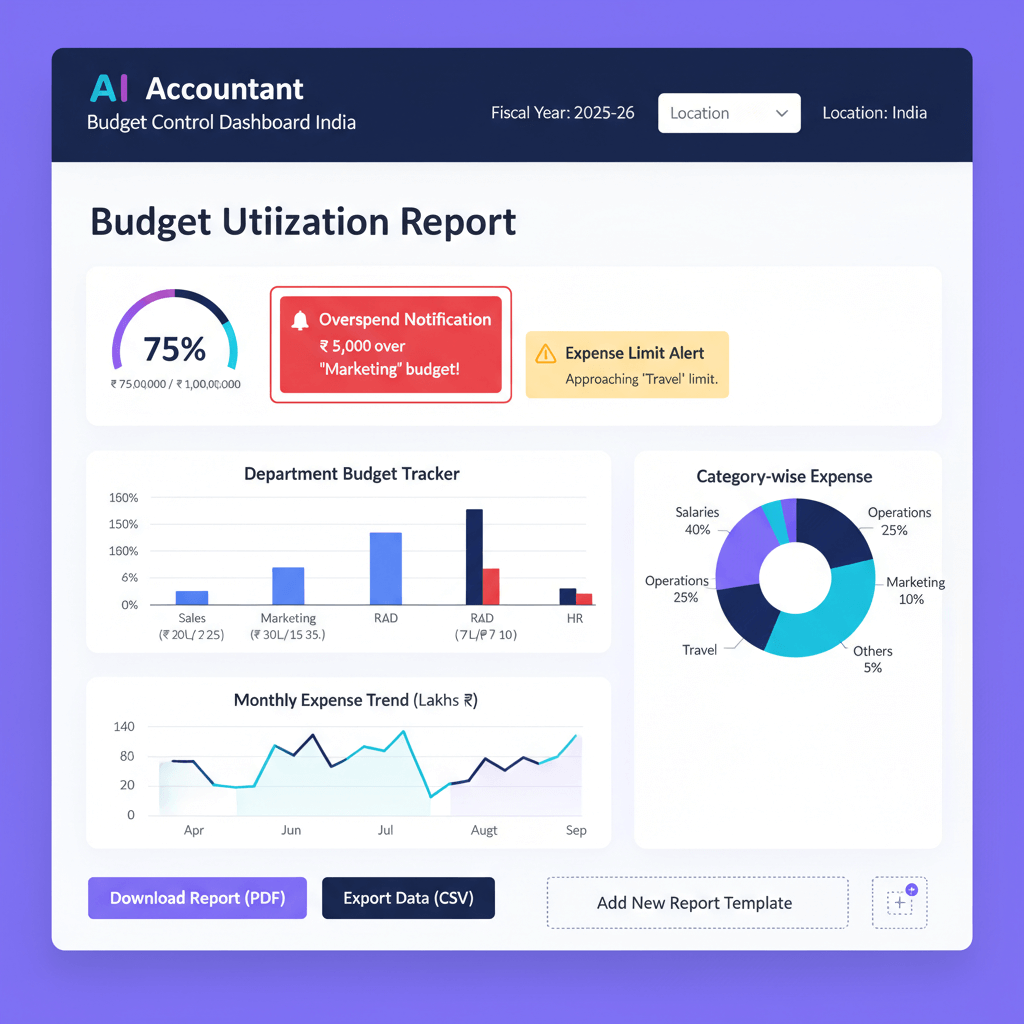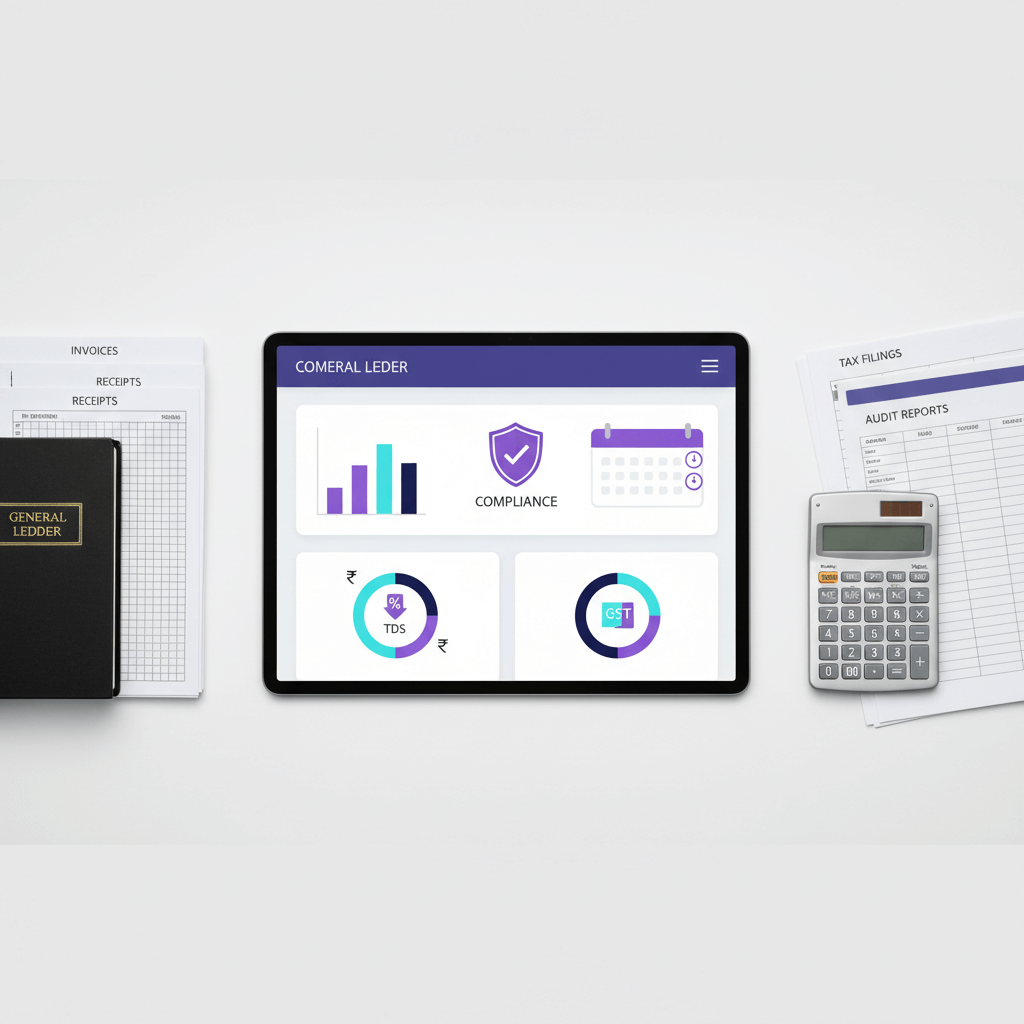Key Takeaways
- Duplicate transactions can distort financial statements, inflate expenses, and disrupt GST compliance.
- Manual reconciliation methods are time-consuming, error-prone, and don’t scale across multiple entities.
- Automated data ingestion and AI-powered pattern recognition catch near-duplicates and narration variations.
- Human-friendly review workflows with confidence scores streamline approval and audit trails.
- Anomaly detection models help identify potential fraud and irregularities in bank entries.
Table of Contents
- Key Takeaways
- Table of Contents
- Why Duplicate and Fraudulent Transactions Matter
- Manual Detection Methods and Their Shortcomings
- Leveraging Technology to Detect Duplicate Transactions
- Identifying Fraudulent Bank Entries with AI-Driven Anomaly Detection
- FAQ
Why Duplicate and Fraudulent Transactions Matter for Your Business
The Real Cost of Duplicate Entries
When duplicate transactions slip through your reconciliation process, the impact goes far beyond simple bookkeeping errors. Your financial statements become unreliable, showing inflated expenses or overstated income that skews critical business metrics.
Consider a Mumbai-based trading company that discovered duplicate vendor payments totaling ₹2.8 lakhs during their year-end audit. These duplicates had inflated their cost of goods sold, understated their gross margins, and led to incorrect GST Input Tax Credit claims. The cleanup process delayed their audit by three weeks and resulted in additional compliance costs.
Duplicate transactions can mislead business decisions:
- Runway calculations become inaccurate.
- Operating expense trends show false spikes.
- Cash flow projections lose their reliability.
For more effective tracking of runway, revenue, and profitability health, you may also consider using a cash flow dashboard that can flag unexpected movements caused by duplicates.
GST Compliance Complications
In India’s GST framework, duplicate transactions create particularly complex challenges. When expense duplicates inflate your ITC claims, you risk notices from the GST department. Similarly, duplicated sales receipts can throw off your outward supplies reporting and create mismatches with e-invoicing validations.
The GSTR-2B reconciliation becomes a nightmare when your purchase books contain duplicate entries. You’ll find yourself manually cross-checking every mismatch, wondering which entries are legitimate and which are artifacts of poor data hygiene.
To automate and streamline your GSTR-2B reconciliation efforts and eliminate mismatch errors caused by duplicate entries, refer to this guide.
Operational Reality of Duplicate Creation
Most duplicates don’t appear maliciously. They creep in through common operational scenarios:
- Re-uploading CSV files after system crashes.
- Bank feed reconnections that pull historical data again.
- Double-posting when entries come from both bank feeds and invoice matching.
Indian banks’ varying statement formats compound this problem. Your OCR system may parse the same UPI transaction differently, resulting in separate entries for what is actually one payment.
To simplify statement digitization and deal with inconsistent formats from different Indian banks, explore this bank statement OCR tool.
Manual Detection Methods and Their Shortcomings
Traditional Reconciliation Approaches
Most accounting teams rely on spreadsheet-based detection methods. You export bank statements, create pivot tables, and filter by date ranges, amounts, or reference numbers. VLOOKUP formulas help match entries across bank statements and general ledger extracts.
This approach works for smaller datasets, but it’s time-intensive and error-prone. You might catch exact duplicate amounts on the same date, but partial duplicates or entries with slight narration differences often escape detection.
Where Manual Methods Fall Short
PDF bank statements processed through basic OCR tools introduce inconsistencies that make duplicate detection harder. One transaction may be parsed as “NEFT Dr-VENDOR PAYMENT” in one instance and “NEFT-VENDOR PMT” in another.
Date proximity adds another layer of complexity—duplicates can appear a day later due to processing delays. Amount variations of a few rupees, caused by rounding or forex fluctuations, also defeat exact matching.
If you’re reconciling across entities or bank accounts, you might benefit from using techniques shared in this multi-bank reconciliation guide.
The Hidden Costs
Manual duplicate detection consumes significant time during critical close periods. Your team spends hours creating filters and cross-checking entries instead of analyzing variances or preparing management reports.
Senior accountants verify each potential duplicate, understand the context, and decide on appropriate treatment. This slows down the entire reconciliation workflow and often pushes close deadlines.
Leveraging Technology to Detect Duplicate Transactions in Bank Data
Automated Data Ingestion and Cleanup
Modern financial automation starts with intelligent data ingestion. Automated systems parse Indian bank formats natively, standardizing dates, amounts, and narrations at the import stage to prevent many duplicates from entering your books.
Smart parsing goes beyond basic field extraction. It recognizes UTR numbers, IMPS references, UPI IDs, and other unique identifiers that can definitively link related transactions.
AI-Powered Pattern Recognition
Advanced duplicate detection uses natural language processing to understand transaction narrations contextually. When a vendor appears as “ABC Enterprises,” “ABC ENTERPRISES PVT LTD,” and “ABC ENT,” the system recognizes them as the same entity.
AI Accountant employs multi-dimensional matching that considers date proximity windows, amounts, narration similarity scores, and linked invoice references. This approach catches duplicates that manual methods miss while reducing false positives.
For even stronger fraud protection and prevention strategies, refer to this guide on AP fraud detection via three-way match automation.
Human-Friendly Review Process
Technology should make your life easier, not more complicated. Effective duplicate detection presents findings in clear, actionable groups with confidence scores. High-confidence duplicates can be auto-merged, while questionable cases are surfaced for human review.
The system allows reversible operations, so you can safely exclude suspected duplicates and reverse the action if needed. Review workflows integrate with your existing approval processes, ensuring segregation of duties and complete audit trails.
Identifying Fraudulent Bank Entries with AI-Driven Anomaly Detection
Detecting fraud requires more than duplicate checks—it demands anomaly detection that spots irregular patterns in real time. AI Accountant uses statistical models and machine learning to:
- Monitor transaction frequency and identify sudden spikes.
- Flag outlier amounts based on historical averages.
- Detect merchant or location inconsistencies using geo-tagged data.
- Combine rule-based alerts with unsupervised learning for unknown threats.
By integrating fraud alerts into your reconciliation workflows, you get a unified dashboard that shows both duplicate resolution status and potential anomalies, enabling proactive investigations.
FAQ
How can I detect duplicate bank transactions using AI Accountant?
With AI Accountant, you can automate data ingestion and apply pattern matching across dates, amounts, and narrations. The tool flags high-confidence duplicates for auto-merge and low-confidence ones for human review, reducing manual errors and speeding up your close.
What thresholds should I set for fuzzy matching to catch partial duplicates?
AI Accountant allows you to configure similarity thresholds, typically starting at 85%. You can test and adjust based on your bank’s narration styles—higher thresholds reduce false positives, while lower ones catch more edge cases.
Can AI Accountant help with GSTR-2B reconciliation issues caused by duplicates?
Yes, AI Accountant cross-references your purchase registers with GSTR-2B data, highlighting duplicates that inflate your ITC claims. It also generates exception reports for manual validation, ensuring compliance.
How do I configure AI Accountant to understand different bank statement formats?
The platform includes pre-built parsers for major Indian banks. You can map additional fields or train custom templates, ensuring consistent date formats and narration standardization across sources.
Is it possible to revert automated merges if I spot an error?
Absolutely. AI Accountant maintains an audit trail and allows reversible operations. You can undo any merge, add comments, and reclassify transactions as needed.
How does AI Accountant differentiate between genuine recurring payments and duplicates?
The system analyzes unique identifiers like UTRs and invoice references. Recurring payments with distinct UTRs are treated as separate entries, while exact duplicates are flagged for consolidation.
Can I integrate AI Accountant with our existing ERP or accounting software?
AI Accountant supports integrations through APIs, CSV exports, and direct connectors for popular ERPs. This ensures your ledger stays up to date with minimal manual intervention.
How can AI-driven anomaly detection prevent bank fraud?
AI Accountant’s anomaly detection uses statistical models to identify outliers in transaction amounts, frequency, or merchant patterns. Alerts surface in real time, enabling swift investigation.
What reporting options are available for tracking duplicate resolution progress?
The dashboard offers status filters—pending review, auto-merged, manually excluded—and visual charts that show resolution timelines, helping you manage close activities more efficiently.
How does AI Accountant handle multi-entity or multi-bank reconciliation?
The platform supports entity hierarchies and bank-level templates. You can consolidate data across accounts, apply entity-specific rules, and use this multi-bank reconciliation guide to optimize your workflows.

-01%201.svg)



